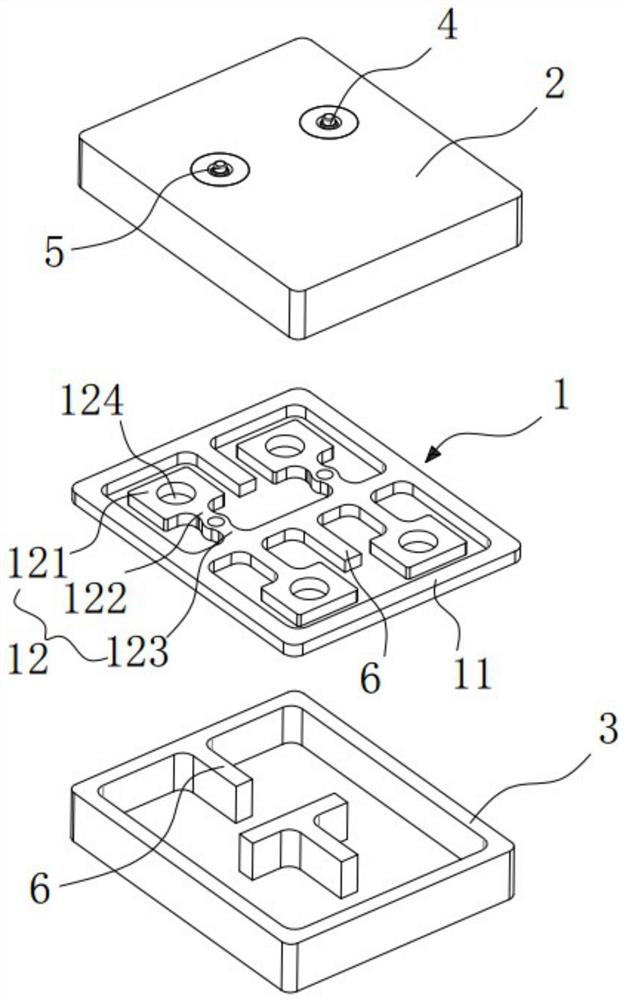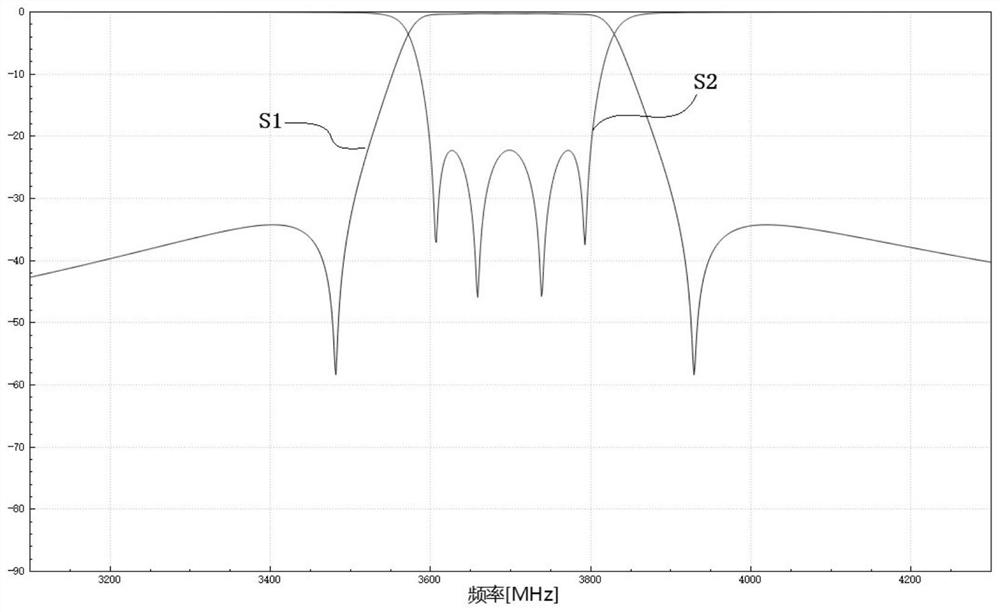Cross-coupled filter
A cross-coupling and filter technology, applied in the field of filters, can solve problems such as filter loss and suppression, insertion loss and suppression, and filter insertion loss, etc., to achieve miniaturization and simplicity. The effect of chemical production engineering and improvement of Q value
- Summary
- Abstract
- Description
- Claims
- Application Information
AI Technical Summary
Problems solved by technology
Method used
Image
Examples
Embodiment 1
[0076] combine figure 1 and figure 2 As shown, a cross-coupled filter according to Embodiment 1 of the present invention includes a resonant structure 1, an upper cover 2, a lower cover 3, a signal input port 4 and a signal output port 5, wherein the upper cover 2, the lower cover The structure of the board 3 , the signal input port 4 and the signal output port 5 can be referred to the above description, and will not be repeated here, but mainly introduces the structure of the resonant structure 1 .
[0077] Such as figure 2 As shown, the filter formed by the resonant structure 1 of Embodiment 1 of the present invention is a fourth-order filter, which includes a frame 11 and two rows of resonant units integrally formed in the frame 11, each row of resonant units includes two resonators 12, That is, four resonators 12 are arranged in the frame, and for the convenience of description, these four resonators are defined as resonator 12a, resonator 12b...resonator 12d, wherein,...
Embodiment 2
[0083] combine Figure 4 and Figure 5 As shown, a cross-coupled filter according to Embodiment 2 of the present invention includes a resonant structure 1, an upper cover plate 2, a lower cover plate 3, a signal input port 4 and a signal output port 5, wherein the resonance of Embodiment 2 of the present invention The filter formed by the structure is also a 4th-order filter, and the difference from Embodiment 1 is, as Figure 5 As shown, the resonator 12a and the resonator 12b in the same row, the resonator 12c and the resonator 12d are mainly electrically coupled, and the resonator 12b and the resonator 12c in different rows are mainly magnetically coupled. The resulting cross-coupling (defined as the first cross-coupling) between the resonators 12a and 12d of the row is predominantly electrical, as opposed to the predominantly magnetic coupling between resonator 12b and resonator 12c. That is to say, between the resonator 12b and the resonator 12c, and between the resonat...
Embodiment 3
[0087] combine Figure 7 and Figure 8 As shown, a cross-coupled filter according to Embodiment 3 of the present invention includes a resonant structure 1, an upper cover 2, a lower cover 3, a signal input port 4 and a signal output port 5, wherein the upper cover 2, the lower cover The structure of the board 3 , the signal input port 4 and the signal output port 5 can be referred to the above description, and will not be repeated here, but mainly introduces the structure of the resonant structure 1 .
[0088] Such as Figure 8 As shown, the filter formed by the resonant structure 1 of Embodiment 1 of the present invention is a 6-order filter, which includes a frame 11 and two rows of resonant units integrally formed in the frame 11, each row of resonant units includes three resonators 12, That is, six resonators 12 are set in the framework. For the convenience of description, these six resonators are defined as resonator 12a, resonator 12b ... resonator 12f, wherein, resona...
PUM
 Login to View More
Login to View More Abstract
Description
Claims
Application Information
 Login to View More
Login to View More - R&D
- Intellectual Property
- Life Sciences
- Materials
- Tech Scout
- Unparalleled Data Quality
- Higher Quality Content
- 60% Fewer Hallucinations
Browse by: Latest US Patents, China's latest patents, Technical Efficacy Thesaurus, Application Domain, Technology Topic, Popular Technical Reports.
© 2025 PatSnap. All rights reserved.Legal|Privacy policy|Modern Slavery Act Transparency Statement|Sitemap|About US| Contact US: help@patsnap.com



